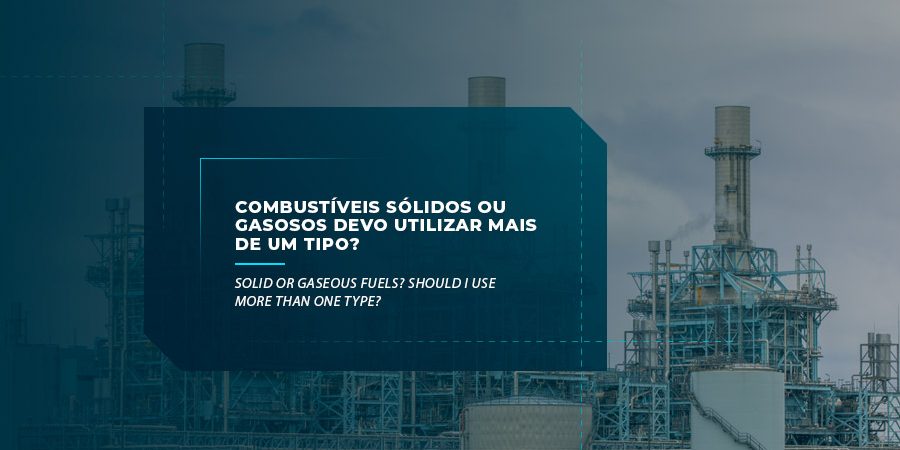Understand more about solid and gaseous fuels and find out how you can use them in your industry!
Fuels are one of the most essential parts to carry out a company’s industrial processes. They are important for the operation of industrial kilns and for carrying out and improving the combustion process.
However, due to some crises that are happening in this market, the price of liquid fuels such as gasoline and diesel oil has been increasing every day. To achieve savings with their combustion processes, many companies have been looking for ways to use alternative solid and gaseous fuels, such as coal and natural gas.
In today’s post from Dynamis we will show you which is the best alternative for your industry, which countries have the most fuel flexibility and in which burners you can use more than one type.
Solid and gaseous fuels
Solid fuels have been used by humans since the beginning of our history. Currently, they are widely used in the combustion process to generate energy in the means of transport and especially in industries.
There are several types of solid fuels for industrial processes, but the most common are coal and petroleum coke. Although the second has a high sulfur content, they are great cost-saving options compared to mineral coal, oil and even low-sulfur petroleum coke.
However, high levels of sulfur in the fuel are correlated with greater recirculation of fine particulates. This amount of dust, in general, can compromise the stability of the kiln and consequently the size and shape of the clinker crystals.
To solve this problem, Dynamis has the D-Flame technology that, due to the optimized geometry of the burning tip and the operational parameters of the project related to the primary air, mainly flows, pressures and injection speeds of the burner, compensate for the negative effects of .the sulfur in the kiln.
To prove the success of our technology, one of the cases happened at Votorantim Cimentos, in the city of Rio Branco do Sul in the state of Paraná where, after installing our burner in a W8 kiln, even operating with a high sulfur petroleum coke ( about 5 to 6%), the kiln stabilized faster than usual, in addition to creating clinker crystals 14% smaller compared to the results of the kiln with the previous burner.
Gaseous fuels, in turn, can be by-products of industrial processes, such as LPG, which is obtained through oil; and can also be from natural reservoirs, which we call natural gas.
Currently, this type of fuel is widely used in American industries, no wonder, they are the largest consumers of natural gas for industrial processes, with a lot of flexibility in the use of alternative fuels.
To give you an idea, in a survey conducted by the Energy Information Administration (EIA), in the year 2017, 9.8 quadrillion btus were consumed in this sector alone, and this figure is expected to grow by around 40% by the year 2050, to 13.7 quadrillion btus.
This is happening because the substitution of liquid fuels for solid or gaseous fuels is a great alternative of lower cost, if they are put in comparison.
What does it take to replace liquid for solid or gaseous fuel?
However, before switching from liquid to solid or gaseous fuels, some adjustments to the operating conditions of the system will be necessary, such as the installation of mills to reduce the particle size of the fuel, in the case of solids, or adjustment in the geometry of the burner, in case of gaseous.
To assist you in making the decision, at Dynamis we carry out a technical feasibility study for the replacement, also checking if the expected time of return on the investment value is according to the customer’s needs. If the replacement is approved, we develop projects related to the exchange of fuel and we can also supply equipment whose purchase will be necessary, always aiming at increasing productivity and reducing costs for the customer.
What is the best fuel option for the industry?
The calorific value is defined due to an amount of thermal energy produced with the complete combustion of 1kg of fuel, which is expressed by a unit called kilojoule per kg and the higher the value, the greater its efficiency.
The calorific value of gaseous fuel is greater than that of solids and liquids, which means that it will release a large amount of energy when burned.
In addition, these types of fuels generate less air pollution.
Can I use more than one type of fuel?
However, due to some crises in natural gas that happened a few years ago, to mitigate fuel risk, some countries, like the United States, sought multi-fuel alternatives for their industries, recognizing that its flexibility is vital to ensure energy for combustion processes.
As a result, companies that provided burners for their kilns began to adapt to provide high flexibility for industries, and technologies such as Dynamis’ D-Flame emerged.
Due to the technology involved in this burner, developed from modern mathematical tools, it is possible to increase the efficiency of kilns that can use different types of fuels. Using D-Flame, there will be efficiency gains using coal, petroleum coke, natural gas, LPG and other liquid fuels such as diesel, in addition to other ultra-viscous ones.
In addition, another great advantage of using our technology is its flexibility, where you can use two types of fuels simultaneously, such as solid and gaseous, in addition to being able to measure the results. In addition to being tailor-made, it will provide better process control to the operator, where it will be possible to perform momentary monitoring of the thermal profile, heating rhythm, breaking of rings, elimination of hot spots, among others.
Learn more about our technology!
Dynamis team

